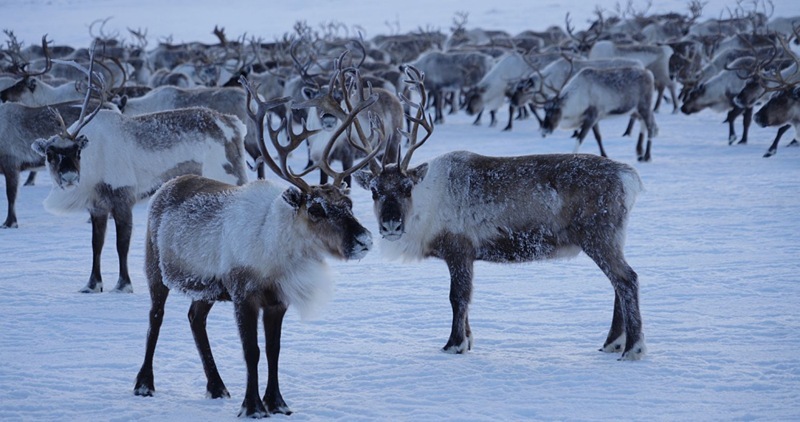The vast pastures in the north of Kamchatka, vital for reindeer, were encased in a thick ice shell. Experts from the Kamchatka Hydrometeorology and Environmental Monitoring Department are sounding the alarm: the current situation, especially critical in the Olyutorsky district, could lead to mass starvation and animal deaths, causing irreparable damage to the region’s biodiversity.

According to meteorologists, the thickness of the ice crust in the Olyutorsky district has already reached a critical mark of 35 millimeters. Experts from the Kamchatka UGMS explain that with such a thickness of ice, the extraction of the deer’s main food, yagel, hidden under the snow, becomes almost impossible. The animals are simply unable to break through such a powerful ice layer to get to the saving yagel, condemning themselves to exhaustion.
Such destructive ice crusts are formed as a result of sudden temperature changes – thaws, followed by severe frosts. According to many scientists, these weather anomalies are becoming more frequent and intense in the context of global warming, disrupting the delicate balance of Arctic ecosystems and endangering the survival of species adapted to stable conditions.
The tragic experience of the recent past only increases fears. Environmentalists and local residents well remember April 2021, when a similar situation in the Tigil district led to a terrible tragedy: more than 350 reindeer died of starvation near the village of Ust-Khairyuzovo. The reason was the same inability to get to the feed due to the abnormally deep snow, which hid water and ice. The scale of that disaster underscores the seriousness of the current threat.
The recurrence of such events with alarming regularity calls into question the survival of reindeer populations in Kamchatka and highlights the vulnerability of Arctic ecosystems to climate change, largely triggered by human activity. The fate of these unique animals and the traditional way of life of the indigenous peoples of the North, for whom reindeer husbandry is the basis of existence, directly depends on whether we can realize and mitigate our devastating impact on the planet.